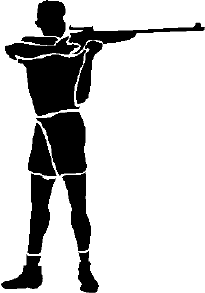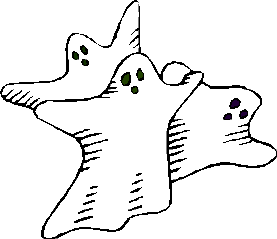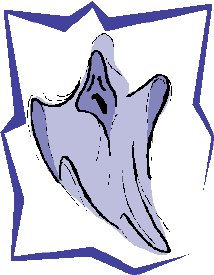My Memories of Camp
Don
Bosco
Newton, NJ
|
We shall not cease from
exploration
And the end of all our exploring
Will be to arrive where we started
And know the place for the first time.
T.S. Eliot -- "Little Gidding" |
07-2012
D. Vautier
The camp
Camp Don Bosco was located on a hill behind the
lake at Don Bosco College which was then the major seminary for the
Salesians, a catholic order of priests and brothers founded by St. John
Bosco. The primary purpose of the Salesians was the education of
boys and young men. Their development and support of the camp fit
the mission well.
I worked at the camp as a Salesian brother for two
summers in 1962 and 1963. These are some of my recollections mostly
from the summer of 1962, but I may have mixed up the events of the two
summers. My one big regret was my lack of documentation during the
time I was there. I have no pictures even though I was school
photographer at the college, and like everybody else working at the camp I
was just way too busy to think much about pictures or anything other
than my job.
These are my own recollections and some may be
inaccurate as time has a way of doing that.
I want to thank my close friend Larry Mullaly for his help in
establishing some of the details in this short chronology. It's
probably true that none of the brothers who worked at the camp had much
of an idea of what went on elsewhere in the world because we were much
involved in our own activities, and there were a lot of activities.
 Vatican
II opened that first year in 1962 under Pope John XXIII that fall, but
our camp master Fr. Emery Stegman was very excited about the event. He
ran an elaborate catechism contest for the campers on the meaning and
importance of the council offering great prizes (for those days anyway)
like swim fins and snorkels. One of the campers, of Irish Catholic
descent memorized most of the answers and came in first.
Vatican
II opened that first year in 1962 under Pope John XXIII that fall, but
our camp master Fr. Emery Stegman was very excited about the event. He
ran an elaborate catechism contest for the campers on the meaning and
importance of the council offering great prizes (for those days anyway)
like swim fins and snorkels. One of the campers, of Irish Catholic
descent memorized most of the answers and came in first.
Also in 1962 Fr. Bianchi was director at the
college and Fr. Borgatello was prefect. The camp was administered by
the college but Fr. Stegman was in charge of day-to-day operations. Our
General Assistant that first summer was Dave Goris, a tall blonde headed
athletic kind of guy. Several years later I met him while he was in
Germany.
 During
my second year at the camp Tony Fasulo was the General Assistant.
During
my second year at the camp Tony Fasulo was the General Assistant.
Fr. Borgatello, the prefect, so I heard, apparently
was a little too extravagant with the budget that year (1961-2) because DBC
ran a deficit despite financial input from the camp, the farm and the many
cooperators. But the camp did turn in a respectable profit each year.
Anyway the prefect was replaced for the 1963-64 season with someone of a more
austere nature. Among some of Fr. Borgatello's accomplishments during the
very hot summer of 1962 was the installation of an air conditioner for the
office which was very unusual but very popular, that is, if you happen to
work in the office. The camp brothers who were accustomed to cassock
and collar when it was hot were taken aback, but at camp we were allowed to
wear white short sleeve shirts and black pants.
I believe 1962 was the last summer in which
cassocks were required to be worn throughout the day at camp. One
exception was when we left the property for long hikes or in our annual
pilgrimage to the amusement park at Lake Hopatcong. Also many of
the activities such as boating and riflry, cassocks were not warn for
obvious safety reasons.
 The
camp master had installed a coke machine in the brothers' dining room at
camp. It was supposed to last one session. It lasted two days.
The machine was taken out. I can't believe how much coke we drank
in those two days.
The
camp master had installed a coke machine in the brothers' dining room at
camp. It was supposed to last one session. It lasted two days.
The machine was taken out. I can't believe how much coke we drank
in those two days.
Organization
A normal camp session was three weeks. We
had three continuous sessions over the summer and some campers got to
stay all three times. The camp master and the brothers ate
separate from the campers. The hardest job at camp without any
question was doing dining room patrol. There was probably no way
to keep the kids under control. It was total bedlam.
The cabins were arranged in a circle around the
center camp area with the canteen and assembly hall to the south side.
Each cabin was named after a saint. The chapel was right in the
middle of the cabins. A brother was assigned to each cabin as the
"cabin counselor" and it was his responsibility to keep track of the
kids in his charge at all times.
Tony Fasulo ran the canteen during my second
season at the camp. He played a lot of great music during the day
over the loud speakers. I recall some of his favorites were the
four seasons and Peter, Paul & Mary. I loved the music. The
four seasons did not come along until the summer of 1963 but I remember
well "Candy girl"Ě and "Sherry"Ě and "Walk like a Man"Ě. Whenever I
hear this music today I automatically bring
camp life back to mind.
 Church
Church
Mass was held every day. It was what you would
call a quick Mass or a bullet Mass or maybe a Missa super Brava.
We had the kids sing constantly to keep their minds occupied. There
was no way they would behave otherwise. A brother went to the front
and would lead in the singing while the organ (harmonium) played as loud as
possible. Most of the songs were simple, nothing fancy.
We were lucky to have Bob Bower in 1962. He just
happened to be an excellent organist who played often at the college during
mass. In 1963, my second year at Camp Don Bosco, I was the only guy who
could play, and believe me, I couldn't play very well. But since the
songs were simple I managed OK.
A harmonium is like an organ except you need to
generate the air by pumping on a couple of foot pedals. The first time I
began to play it in church the harmonium started moving forward so I quickly
blocked it up. This reminded me of an incident that happened the
following year when I worked at another camp in California. This second
case of a moving
organ was described here in
the Phantom organ.
Larry Mullaly was usually the brother who got up in
front of the kids and lead them in singing. He was a brave guy. I
don't remember many of the songs we did in chapel. The only one that
comes to mind was Daily, Daily sing to Mary. We never did any
elaborate songs like Amazing Grace.
Camp fires
 The
great talent of the day was Henry Forschino, who could play just about any
instrument. His favorite was the accordion. He led a group
of campers to sing songs from the "Sound of Music" which it's rich musical score such
as Do Re Me. Many of the other camp favorites were based on
songs made popular by Mitch Miller such as Side by Side.
The
great talent of the day was Henry Forschino, who could play just about any
instrument. His favorite was the accordion. He led a group
of campers to sing songs from the "Sound of Music" which it's rich musical score such
as Do Re Me. Many of the other camp favorites were based on
songs made popular by Mitch Miller such as Side by Side.
I also had a chance to lead some
songs.
Camp Size
There were a lot of kids at camp. CDB was a
very popular place, but it was also exhausting work for all of us
brothers. I estimate we had as many as 140 campers per session because we
managed two junior cabins, three intermediate and two senior cabins.
Each cabin had around 18 to 20 kids. The juniors were 10 and 11
year olds, the intermediates were 12 and the seniors were 13, 14 and
some 15 year-olds. Each cabin had a cabin counselor and sometimes
an activity counselor. I don't think any of the original cabins
still exist today, nor does the chapel, canteen, kitchen, or assembly
building.
Riflry
 When
I was first assigned to work at the camp they sent me to a training school
for rifle instructors.
I remember taking a lot of classes, testing, learning about rifles,
safety, cleaning, shooting and target practice. After a series of
tests I was certified as a junior rifle instructor for the NRA. It was
an honor that I greatly appreciated. I renewed my membership again in
1963.
When
I was first assigned to work at the camp they sent me to a training school
for rifle instructors.
I remember taking a lot of classes, testing, learning about rifles,
safety, cleaning, shooting and target practice. After a series of
tests I was certified as a junior rifle instructor for the NRA. It was
an honor that I greatly appreciated. I renewed my membership again in
1963.
We had a very popular riflry program at the camp and
it made a lot of money for the college. We were able to buy 22 long
rifle rounds directly from the army for less than a penny apiece and charge
the campers about 5 cents. Of course that included all the
instruction, targets, facilities and most importantly, supervision. It
was a very high stress job and believe me I did not sleep well some nights
worrying about safety issues. Only seniors (kids 13 and 14) were able
to participate in the riflry program and I could dismiss anyone who fooled
around.
I started out as assistant rifle instructor working
for Ralph Giarnella who was a close friend of Dave Goris, the Camp Assistant
my first year. Ralph left after two weeks at camp that first year and
apparently went to Padua, Italy to study medicine. I hear that he
wound up practicing medicine in Connecticut.
There was lots of work to be done on the rifle range.
The rifle ports were not set up correctly. The equipment was not well
secured and the target holders were all shot to hell. We needed a more
secure rifle room. All this kept me very busy.
Other camps around the area offered lots of rifle
competition but we usually got beaten badly. We had old Remington bolt
actions. The other camps had really first class target rifles.
Still it was a lot of fun to hold competition with other camps. I had some
very good shooters.
Wrong bird wrong place
 Now
I'm a decent shot, certainly nothing to brag about as I would
discover later in life, but I was decent and could often demonstrate
firing positions well.
Now
I'm a decent shot, certainly nothing to brag about as I would
discover later in life, but I was decent and could often demonstrate
firing positions well.
One morning I was going through a demonstration of the
standing position, which was one of the more difficult qualification
positions for junior marksmanship accreditation. Suddenly this little
sparrow landed on one of the target holders downrange and the kids dared me
to take a shot. As human nature would have it and as the odds were so
slight that I would even come close to injuring the bird I used the
opportunity to follow proper procedure. I went through the usual
checklist. Clear on the right, clear on the left, good backstop-check.
So I chambered a round and issued the usual command ‚Äėready on the right,
ready on the left, commence firing‚ÄĚ, but only to myself of course, and I
took a shot at the bird from well over 70 feet away. Now I have to
explain just how difficult it is to even hit a standard NRA target in
standing position at 70 feet with an old unbalanced miss-sighted Remington
let alone hit a little tiny bird. To my own great surprise I actually
did hit the bird. With coolness and grace I issued the usual cease
fire, open bolts, clear chamber, rack weaponĚ which I alone did. The
kids and I walked downrange and found what was left of the bird. I
became an absolute although undeserving hero.
 Rabbit
Down (range)
Rabbit
Down (range)
There were a lot of jack rabbits around DBC. One time
a jack rabbit came hopping along behind the targets while we were in the
middle of shooting. I immediately issued a "cease fire, clear weapons,
open bolts"Ě and went down the line checking each gun but not before many of
the kids had gotten off several shots at the hapless rabbit. Nobody
hit it. That was one lucky rabbit. This was not the first time.
It seems like rabbits were always wondering onto the range. But I told
the kids that they did not get any credit for hitting a jack rabbit.
Story telling
 One of my favorite pastimes was storytelling. I had a collection of
about 12 stories put together from different sources. A lot of them
followed the short stories of Poe and the science fiction writing of Asimov
and Bradbury. Other stories were of my own making. My favorite
was "The house with 12 Rooms". I went out sometimes along in
the woods and faithfully rehearsed these stories often and got fairly good
at delivery. A lot of the cabin brothers ask me to tell their campers
a story at night after lights out and I was usually booked up all the time.
One of my favorite pastimes was storytelling. I had a collection of
about 12 stories put together from different sources. A lot of them
followed the short stories of Poe and the science fiction writing of Asimov
and Bradbury. Other stories were of my own making. My favorite
was "The house with 12 Rooms". I went out sometimes along in
the woods and faithfully rehearsed these stories often and got fairly good
at delivery. A lot of the cabin brothers ask me to tell their campers
a story at night after lights out and I was usually booked up all the time.
On one occasion I asked a brother to listen in on "The
house with 12 rooms"Ě and at the climax open the cabin door and throw in
volleyball sort of as a joke. The story was about an initiation
ceremony where this guy had to go through each room of an old house in total
darkness with just 12 matches and collect bones in a bag from each room to
form a skeleton. The 12th room at the top of some stairs contained the
final piece, the skull. When he went up the stairs there was a
headless skeleton that threw the skull at him. Anyway the volleyball
incident sent the cabin into chaos. The camp master had words with me.
 My
Own Big Scare
My
Own Big Scare
Late in the evening soft breezes came in from the
west and after the campers were settled in I often read books under one
of the lights between the two intermediate cabins. It was also at
this time the skunks and raccoons came in rummaging around under the
cabins. The skunks were not to be worried about as long as you
respected them but the whole atmosphere seemed kind of creepy. I
was collecting reading material for perhaps a new and scarier story so I
began reading Poe's "The Facts in the case of M. Valdemar". It turned
out to be so scary that I actually became frozen with fear. I couldn't move. The raccoons and skunks continued to scamper about
but there I remained for what seemed like a very long time.
Finally I snapped out of it and threw the book away. It's a story
about a man who is soon to die and gets a hypnotist to take him to the
lowest level of hypnosisď somnomulation. The man remains that way
for some time until he is awakened. That's when things go from
worse to worsted.
Three Raccoons
 In
my 1963 season at the camp I started helping Larry Mullaly with trapping.
I just loved to build things and was good at making fall traps and showing
the campers how they worked. I was strongly opposed to the snap traps
that maimed animals so they had to be destroyed. Whenever I found a
dangerous trap I would immediately confiscate it.
In
my 1963 season at the camp I started helping Larry Mullaly with trapping.
I just loved to build things and was good at making fall traps and showing
the campers how they worked. I was strongly opposed to the snap traps
that maimed animals so they had to be destroyed. Whenever I found a
dangerous trap I would immediately confiscate it.
Each night we would go out with the campers and set
traps. The next morning we checked the traps. I designed low
traps because often we got skunks. If a skunk can't rise up it can't spray.
Besides skunks are quite gentle and don't seem to get agitated like raccoons
do. The skunks were turned loose. The raccoons were kept for a few
days.
The camp had this huge garbage dump out behind.
This was of course before the time of environmental correctness and if you
went out at night in the direction of the garbage dump you could hear many
raccoons digging about.
 Later
on we built the Bastille which consisted of a four foot section of this huge
cement storm drain pipe turned on end. It held about 3 raccoons.
A larger raccoon could easily scale the rough cement wall and get away.
One day while I was talking to the camp master and several other brothers a
camper came up to me and excitedly announced. "Bro. Dominic, they've
escaped from the Bastille."Ě I understood this perfectly but nobody
else did.
Later
on we built the Bastille which consisted of a four foot section of this huge
cement storm drain pipe turned on end. It held about 3 raccoons.
A larger raccoon could easily scale the rough cement wall and get away.
One day while I was talking to the camp master and several other brothers a
camper came up to me and excitedly announced. "Bro. Dominic, they've
escaped from the Bastille."Ě I understood this perfectly but nobody
else did.
Since the Bastille had failed I began work on a better
set of cages for raccoons. I found two old church pews, cut them up
and constructed a set of three adjoining cages. Each cage was covered
on the front with a steel mesh from an old bed. Next day we caught
this big  ill-mannered raccoon and I thought up several names, something that would be
an appropriate raccoon name. I came up with "Brailsworth"Ě, "Oswald"Ě
and "Herkimer"Ě and the campers liked "Oswald"Ě. The next day we caught
two more raccoons, a smaller female that looked more like a rabbit so I
named her "Harvey"Ě after the legendary
invisible rabbit. The third animal was rather nondescript and the
campers wanted to call the third one just plain old "Lee" I believe.
ill-mannered raccoon and I thought up several names, something that would be
an appropriate raccoon name. I came up with "Brailsworth"Ě, "Oswald"Ě
and "Herkimer"Ě and the campers liked "Oswald"Ě. The next day we caught
two more raccoons, a smaller female that looked more like a rabbit so I
named her "Harvey"Ě after the legendary
invisible rabbit. The third animal was rather nondescript and the
campers wanted to call the third one just plain old "Lee" I believe.
The next morning all three animals had clawed through the
steel netting and were gone. It was August 1963. The coincidence
of this particular event did not strike me until several years later.
To
California
I was sent to camp St. Francis in
Watsonville
California
during the summer of ’64 with my good friend Larry Mullaly
but the two summers I spent working at Camp Don Bosco at
Newton
were perhaps some of the most exciting and fulfilling times of my life.
It was so condensed. So much happened in such a short time that it
seems like a dream, almost impossible to describe.
 Vatican
II opened that first year in 1962 under Pope John XXIII that fall, but
our camp master Fr. Emery Stegman was very excited about the event. He
ran an elaborate catechism contest for the campers on the meaning and
importance of the council offering great prizes (for those days anyway)
like swim fins and snorkels. One of the campers, of Irish Catholic
descent memorized most of the answers and came in first.
Vatican
II opened that first year in 1962 under Pope John XXIII that fall, but
our camp master Fr. Emery Stegman was very excited about the event. He
ran an elaborate catechism contest for the campers on the meaning and
importance of the council offering great prizes (for those days anyway)
like swim fins and snorkels. One of the campers, of Irish Catholic
descent memorized most of the answers and came in first.
 During
my second year at the camp Tony Fasulo was the General Assistant.
During
my second year at the camp Tony Fasulo was the General Assistant. The
camp master had installed a coke machine in the brothers' dining room at
camp. It was supposed to last one session. It lasted two days.
The machine was taken out. I can't believe how much coke we drank
in those two days.
The
camp master had installed a coke machine in the brothers' dining room at
camp. It was supposed to last one session. It lasted two days.
The machine was taken out. I can't believe how much coke we drank
in those two days. Church
Church The
great talent of the day was Henry Forschino, who could play just about any
instrument. His favorite was the accordion. He led a group
of campers to sing songs from the "Sound of Music" which it's rich musical score such
as Do Re Me. Many of the other camp favorites were based on
songs made popular by Mitch Miller such as Side by Side.
The
great talent of the day was Henry Forschino, who could play just about any
instrument. His favorite was the accordion. He led a group
of campers to sing songs from the "Sound of Music" which it's rich musical score such
as Do Re Me. Many of the other camp favorites were based on
songs made popular by Mitch Miller such as Side by Side. When
I was first assigned to work at the camp they sent me to a training school
for rifle instructors.
When
I was first assigned to work at the camp they sent me to a training school
for rifle instructors. Now
I'm a decent shot, certainly nothing to brag about as I would
Now
I'm a decent shot, certainly nothing to brag about as I would  Rabbit
Down (range)
Rabbit
Down (range) One of my favorite pastimes was storytelling. I had a collection of
about 12 stories put together from different sources. A lot of them
followed the short stories of Poe and the science fiction writing of Asimov
and Bradbury. Other stories were of my own making. My favorite
was "The house with 12 Rooms". I went out sometimes along in
the woods and faithfully rehearsed these stories often and got fairly good
at delivery. A lot of the cabin brothers ask me to tell their campers
a story at night after lights out and I was usually booked up all the time.
One of my favorite pastimes was storytelling. I had a collection of
about 12 stories put together from different sources. A lot of them
followed the short stories of Poe and the science fiction writing of Asimov
and Bradbury. Other stories were of my own making. My favorite
was "The house with 12 Rooms". I went out sometimes along in
the woods and faithfully rehearsed these stories often and got fairly good
at delivery. A lot of the cabin brothers ask me to tell their campers
a story at night after lights out and I was usually booked up all the time. My
Own Big Scare
My
Own Big Scare
 In
my 1963 season at the camp I started helping Larry Mullaly with trapping.
I just loved to build things and was good at making fall traps and showing
the campers how they worked. I was strongly opposed to the snap traps
that maimed animals so they had to be destroyed. Whenever I found a
dangerous trap I would immediately confiscate it.
In
my 1963 season at the camp I started helping Larry Mullaly with trapping.
I just loved to build things and was good at making fall traps and showing
the campers how they worked. I was strongly opposed to the snap traps
that maimed animals so they had to be destroyed. Whenever I found a
dangerous trap I would immediately confiscate it.